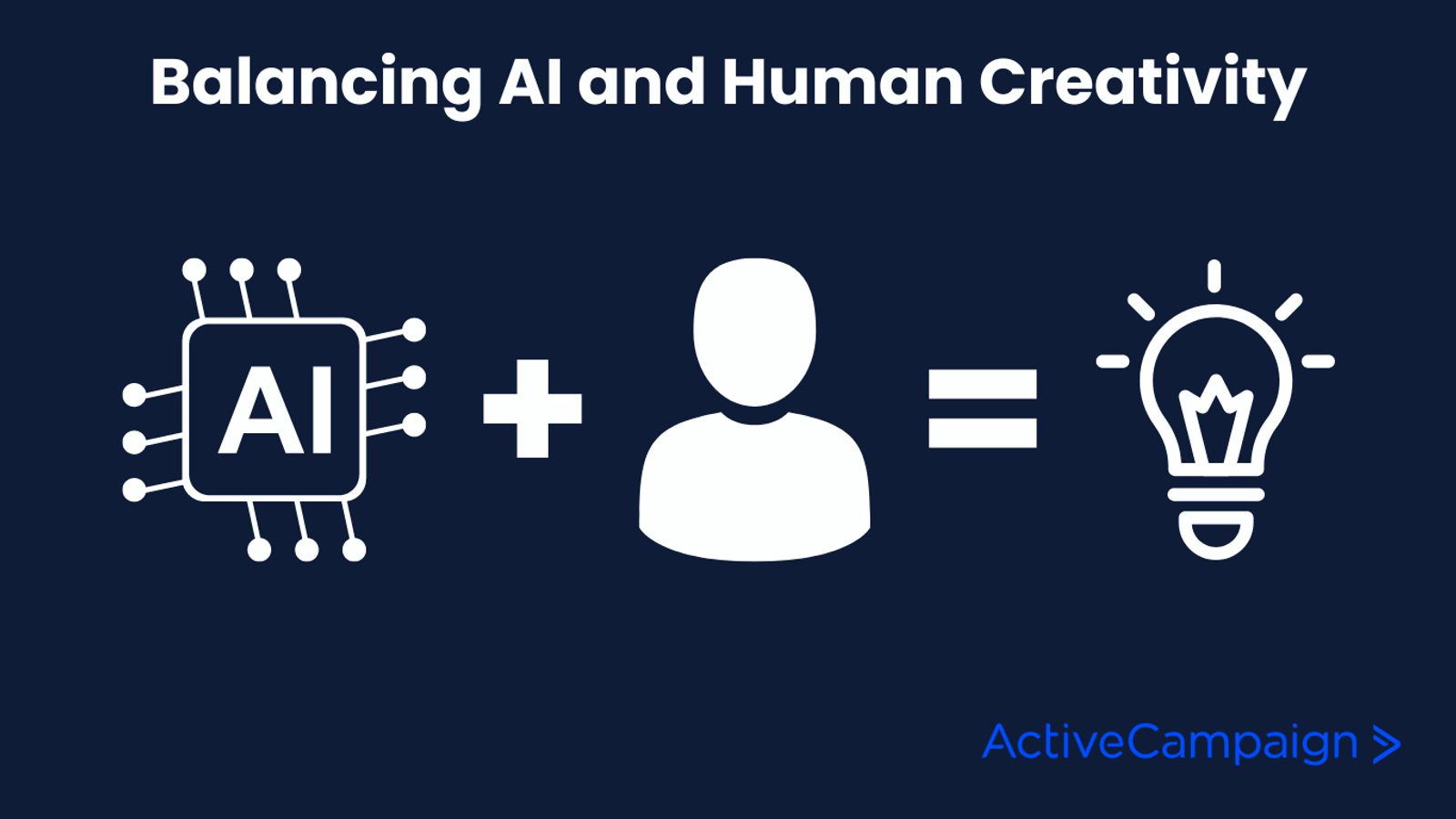In the first episode of Angles and Insights, an ActiveCampaign Podcast, host Casey sat down with Jason Lemkin from SaaStr and Wade Foster from Zapier to debate some of the most pressing topics in today's business and SaaS landscape.
If you’re interested in delving into the insights shared by Foster and Lemkin, feel free to listen to the full discussion below. Otherwise, we've distilled their conversation into this blog post, focusing on four key areas that are shaping our professional and digital lives while offering a synthesized view for those who prefer a quicker read.
The four areas covered in the podcast and this post are:
- The evolving dynamics of remote work.
- The most effective marketing channels of 2024.
- The strategic decision between developing owned assets versus relying on "walled gardens."
- The practical realities versus the hype surrounding AI.
Drawing on their extensive expertise, Jason and Wade explore each topic in-depth, offering valuable perspectives essential for anyone looking to stay ahead in the rapidly changing business environment.
The remote work revolution: navigating the shift in workplace dynamics

Lemkin and Foster start by discussing the transformative shift towards remote and hybrid work environments, a change that recent global events have dramatically accelerated. This discussion explores various work models, from fully remote to hybrid approaches, and highlights the need for businesses to adapt thoughtfully to these new workplace dynamics.
The conversation provides critical insights into crafting effective remote work policies that support the evolving needs of both businesses and their employees.
Embracing remote work: insights and strategies
The shift towards remote work has been one of the most significant changes in the corporate world, especially heightened by recent global events. As companies adapt to new realities, understanding the nuances of remote work becomes crucial. Leaders like Jason Lumpkin and Wade Foster provide invaluable insights into the challenges and opportunities that come with remote setups.
The hybrid model: balancing flexibility and structure
The debate between fully remote and hybrid work models continues as businesses strive to find a balance that maximizes both productivity and employee satisfaction. Jason advocates for a hybrid model with local hubs, which is especially beneficial for maintaining close relationships with major clients and fostering a sense of community among employees. This model allows for flexibility and periodically brings people together, enhancing teamwork and company culture.
Key benefits of hybrid work:
- Enhanced flexibility: Employees enjoy the blend of home-based and office work, which can lead to increased job satisfaction and work-life balance.
- Maintained company culture: Periodic in-person interactions help maintain the company culture, which might be diluted in a fully remote setting.
Challenges to overcome:
- Managing logistics: Balancing remote and in-office setups requires robust management tools and clear communication strategies.
- Cultural cohesion: Ensuring that all employees feel connected and valued regardless of physical location.
The fully remote setup: insights from zapier
Wade Foster's approach with Zapier, a company that started and has thrived as a fully remote organization, highlights the potential of remote work to harness global talent and foster a flexible working environment. This model has allowed Zapier to innovate and grow without the geographical limitations that traditional offices present.
Advantages of going fully remote:
- Global talent access: Companies can hire the best talent regardless of geographic location, widening their recruitment pool significantly.
- Increased employee satisfaction: Many employees appreciate the flexibility and the ability to design their work environment, which can lead to higher retention rates.
Drawbacks to consider:
- Lack of spontaneous collaboration: Remote work can sometimes hinder spontaneous idea exchanges that occur naturally in physical office spaces.
- Challenges in building relationships: Creating and maintaining strong interpersonal relationships can be more challenging when interactions are only virtual.
Crafting your remote work policy
Deciding between hybrid and fully remote setups depends on numerous factors, including company size, industry, and your team's specific needs. Leaders must consider what works best for their operational goals and corporate culture. While remote work offers numerous benefits, it also requires thoughtful implementation and ongoing adjustments to meet the evolving needs of the workforce and the business.
Regardless of the chosen path, the key to success lies in flexible strategies and tools that support effective communication and project management, ensuring all team members feel connected and engaged.
Navigating the waters of 2024 marketing channels

The next topic Lemkin and Foster delve into on the podcast is the dynamic realm of digital marketing channels for 2024. They explore how understanding which channels yield the best ROI remains critical to any marketing strategy.
Despite the dominance of familiar channels, they discuss the evolving nuances that marketers must grasp to stay ahead in a rapidly changing digital landscape.
The continued reign of search engine optimization
Search engine optimization (SEO) remains a cornerstone of digital marketing strategies due to its efficiency and effectiveness. Despite growing competition and changes in search engine algorithms, SEO continues to provide substantial returns on investment.
Established domains with strong keyword strategies can achieve significant visibility and draw targeted traffic, making SEO a consistently reliable channel even as it becomes more demanding each year.
Why SEO still works
SEO's magic hasn't faded; it simply requires more sophistication and effort than before. Marketers need to push harder—approximately 10 to 20% more effort each year—to maintain and improve their SEO results. This might sound daunting, but for those willing to innovate and adapt, SEO remains a potent tool capable of driving significant online engagement and conversions.
The Partnership Model
In addition to SEO, effective partnership models continue to prove their worth as a primary marketing channel. By leveraging relationships and collaborations, brands can extend their reach and bolster their marketing efforts. This approach is particularly powerful when combined with strong SEO practices, creating a robust marketing strategy that drives consistent results despite the competitive landscape.
The role of content and domain authority
Quality content and strong domain authority are more crucial than ever. They not only support SEO efforts but also help build a brand’s credibility and authority in its niche. This dual approach aids in ranking and establishes a brand as a thought leader, which naturally attracts more traffic and engagement.
The Impact of AI and technological changes
While the discussion goes further into AI later in the episode, they touch on how integrating AI and new technologies continues to shape the marketing playbook. While these advancements bring new challenges, they also open opportunities for those prepared to innovate and adapt their strategies.
While the tools and tactics may evolve, the fundamentals of a strong marketing strategy remain rooted in understanding and leveraging the channels that best reach and engage target audiences. In 2024, we must stay informed about technological trends to leverage them effectively and maintain a competitive edge. SEO and partnership models, supported by quality content and robust technological integration, remain at the forefront of effective digital marketing.
Embracing owned assets over walled gardens in marketing

Continuing the discussion on the podcast, Lemkin and Foster tackle another crucial aspect of digital strategy: the decision between developing owned assets and relying on 'walled gardens' such as social media platforms.
They examine the strategic implications of each approach and explore why opting for owned assets might be the smarter long-term strategy for brands in today's evolving digital landscape.
The risks of relying on walled gardens
Social media platforms are often referred to as ‘walled gardens’ because they control the environment and the data within it. This control can significantly limit a brand’s ability to engage directly with its audience. As platforms adjust their algorithms, the organic reach of content can decrease dramatically, making it harder to drive traffic back to your website or other owned properties.
For example, changes in social media algorithms have reduced brands' visibility and engagement. This unpredictability can undermine marketing strategies that rely heavily on these platforms. Instead of being at the mercy of these platforms, brands should consider investing more in assets they have full control over, such as email lists and websites.
The advantages of building owned assets
Building owned assets allows brands to control the narrative and engagement. One key benefit is the longevity and reliability of these assets. Unlike social media platforms, which can shift policies and algorithms anytime, owned assets like email lists remain a stable foundation for customer engagement.
Pro tip: Email marketing is likely to remain effective far into the future, providing a reliable channel for personal connections with audiences.
Additionally, focusing on owned assets encourages brands to create content that can survive on its own merit, independent of the platform it's shared on. This leads to higher quality, more impactful marketing that can drive direct traffic to your site and enhance SEO efforts.
Strategic considerations:
- Longevity and control: With owned assets, you're not subject to the whims of third-party platforms. Your website and email list are yours to manage, offering stability in your marketing efforts.
- Quality and impact: By focusing on creating valuable content that lives on your owned channels, you invest in assets that can continually bring returns, improving your SEO and customer engagement.
- Direct audience relationships: Owned assets facilitate direct relationships with your audience, allowing for more personalized and meaningful interactions that build loyalty and trust over time.
While social media and other walled gardens offer immediate reach and engagement, the strategic development of owned assets provides a safeguard against the volatility of these platforms. By investing in resources you control, you protect your marketing efforts from external disruptions and build a more sustainable and impactful marketing strategy.
AI in reality vs. hype: navigating the practical applications of AI

Moving deeper into the technological discourse, the podcast shifts focus to artificial intelligence. Lemkin and Foster discuss the evolving landscape of AI, distinguishing between the overhyped expectations and the actual practical applications reshaping industries.
They delve into how businesses integrate AI not merely as a tool for automation but as a critical component for innovation and strategic advantage.
Understanding AI: beyond the hype
Once considered a buzzword, AI technology is now a critical tool in the toolbox of many businesses, large and small. While larger corporations may integrate AI more slowly due to complexities such as data privacy concerns, smaller companies are leveraging AI to enhance their operational efficiency and competitive edge significantly.
AI is not just about automating routine tasks; it's about enhancing the capacity for innovation and decision-making within businesses.
AI's transformative impact:
- Research and development: AI accelerates keyword research and content generation, enabling businesses to produce high-quality output with reduced effort and time.
- Content personalization: AI tools are used to tailor content dynamically, improving engagement by aligning more closely with user preferences and behaviors.
- Operational efficiency: Small businesses, in particular, are using AI to 'punch above their weight class,' achieving more with less by automating complex processes and tasks.
Leading AI-first brands
As AI reshapes business landscapes, several brands stand out for their innovative use of AI technologies, too many to cover in a podcast episode or blog post.
Here are a couple mentioned by Lemkin and Foster in the episode:
- Intercom: They recognized early on the potential of AI to be both a threat and an opportunity. They pivoted their organization to integrate AI deeply into their operations, transforming how they connect with customers.
- Opus Clip: A newer player in the market that has swiftly scaled to significant revenue figures by leveraging AI capabilities effectively in their offerings.
These companies exemplify how integrating AI can lead to substantial business growth and innovation. They are not merely using AI for incremental improvements but embedding it into the core of their strategic operations.
The real pace of AI adoption
The integration of AI into business processes is not occurring at a uniform pace across all industries. Smaller companies and startups are often quicker to adopt and experiment with AI due to less bureaucracy and greater flexibility. However, even within larger organizations, there are often 'change champions' pushing forward with AI-driven innovations.
The discussion also highlights that while AI can provide significant efficiencies and improvements, it is not a silver bullet that replaces the need for human insight and expertise. The most successful applications of AI are those where it complements human skills, enhancing rather than replacing the human element.
As AI continues to evolve from hype to reality, businesses that can effectively integrate these technologies into their strategic plans will likely lead their industries. By understanding the practical applications and remaining adaptable to new advancements, companies can leverage AI not just for automation but as a pivotal component of their innovation strategies.
Looking ahead: continuing the conversation
As we wrap up this insightful discussion from the inaugural episode of the Angles and Insights podcast, it's clear that the topics of remote work, effective marketing channels, the strategic choice between owned assets and reliance on external platforms, and the real-world applications of AI, are more relevant than ever. As Jason Lemkin and Wade Foster articulated, each of these areas presents unique challenges and opportunities businesses need to navigate to stay ahead in the dynamic landscape of 2024 and beyond.
This episode is just the beginning. We encourage you to join the ongoing conversation by tuning into future episodes of Angles and Insights. Subscribe on iTunes, leave a review, and engage with us on social media to share your thoughts and stay updated on upcoming discussions.
By staying connected, we can continue to learn and grow together, leveraging the collective expertise of thought leaders like Jason and Wade to enhance our strategies and operations. Together, we’ll delve deeper into these critical topics and explore new insights that can drive our industries forward.






